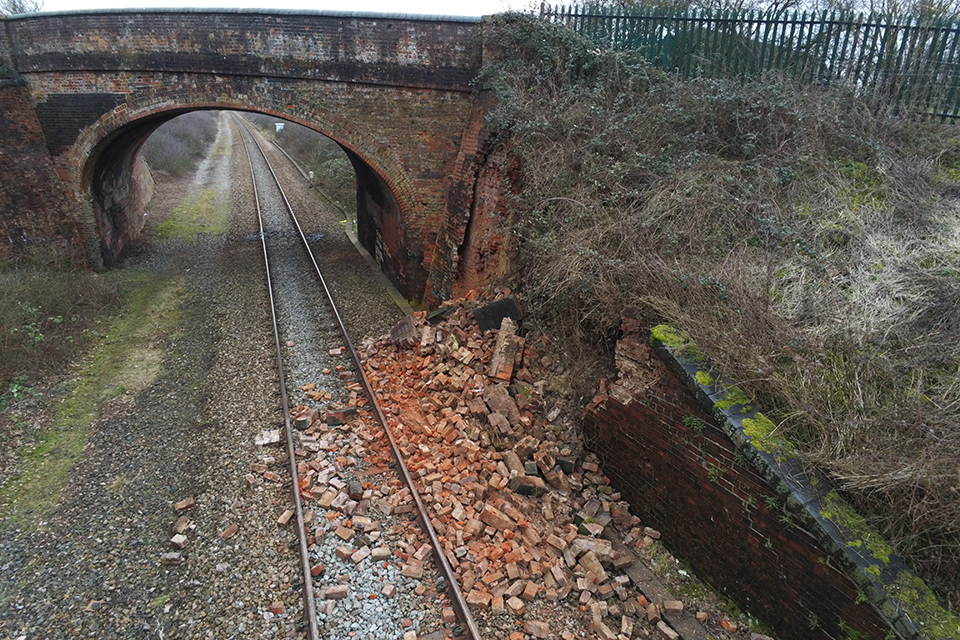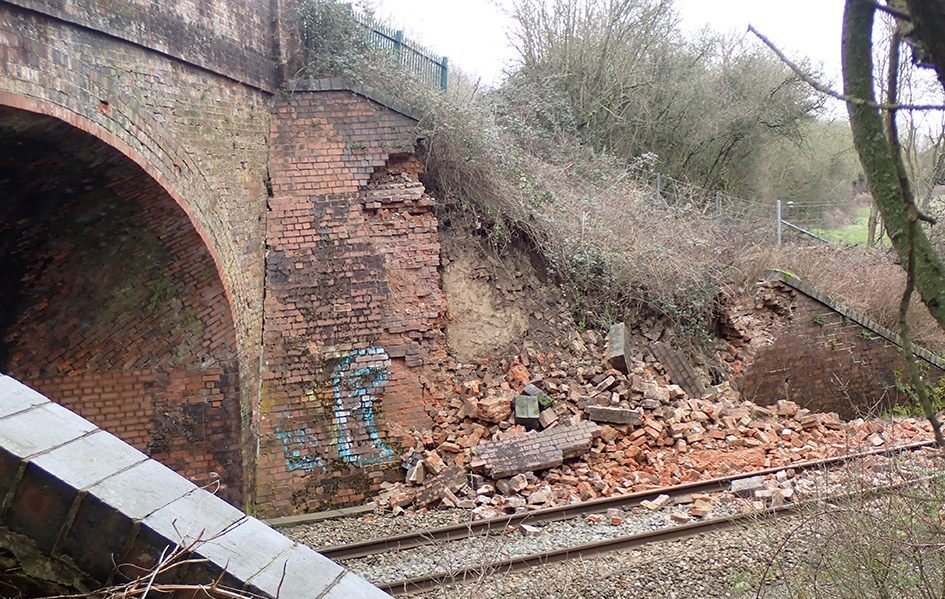DelW
Established Member
- Joined
- 15 Jan 2015
- Messages
- 4,809
It takes time to decide on the best option, carry out the design and an independent check, source the chosen sheet piles, and mobilise a piling gang and equipment, before the work itself can be started. Having been in such situations many times (not on railways), I think they've managed it pretty quickly.Not saying it’s wrong, just surprised it took so long to do this, if this was the best option.
Compare the earlier photos with this recent one. Wing/retaining walls are erected/constructed for a reason. The interlocking sheet piles are not in the same place/same alignment as the brick wing/retaining wall was.
Wingwalls can be parallel to the railway, or parallel to the road, or at any angle in between - they carry out the same function whichever is chosen. Possibly in this case it's to avoid the buried part of the sheet piles clashing with the old wingwall's foundations.
[Edit] looking at the photo on a proper-sized screen, these piles are anchored not cantilevered, but most of the above still applies.
Last edited:



